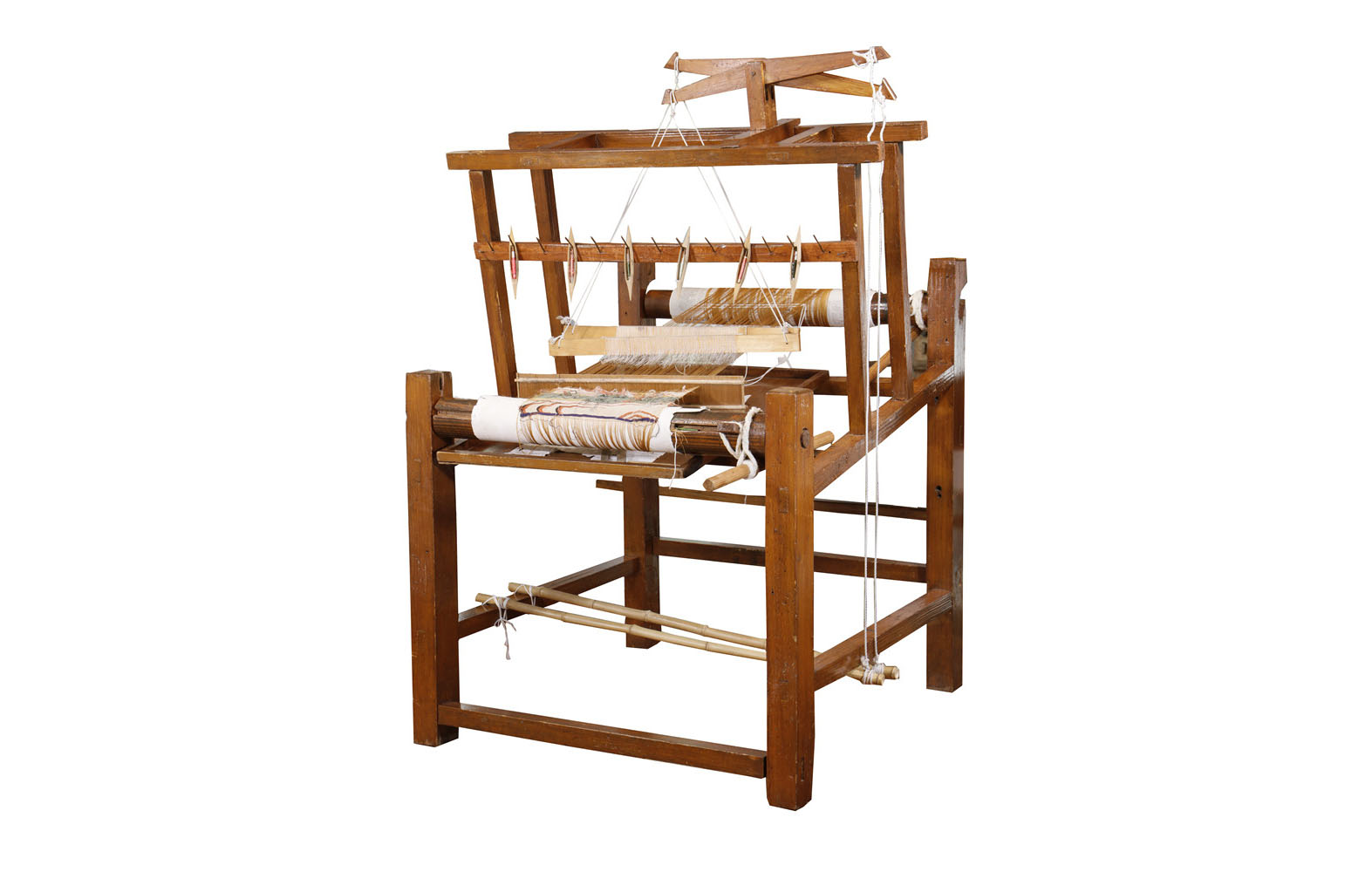
缂丝机
缂丝机
Kesi Loom
缂丝是采用通经回纬法以平纹组织织成。织制时以本色丝作经,用小梭将各色纬线依画稿挖梭织入,最后不同色彩的纬线间出现空隙,如“雕镂之状”,因此又称刻丝、克丝。缂丝技术出现于唐代,盛行于宋代,自南宋以后苏州缂丝,盛名全国,成为主要产地,一直延续至今。
In kesi, or tapestry weave, one set of undyed warps is woven with discontinuous wefts of different colors only at the point where the particular color is required. This unique technique allows the weaver to interpret both the motif and the coloration with enormous flexibility and between two areas of colors. The technique was first used to make wool tapestry and adapted to silk in China in the Tang dynasty. It became popular in the Song dynasty, and continues to be woven today.